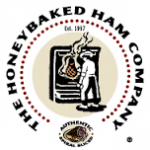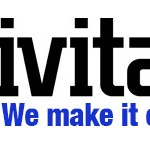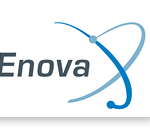At the beginning of my career, I was fortunate enough to have taken a class at UCLA taught by two great names in Los Angeles advertising, Jean Craig and Jack Foster. Some of the most innovative, freshest advertising in the 1980’s and 90’s came out of these two remarkable creative leaders. Jack, especially, inspired me because he was a Student (capital S) of creativity. He explored – and later wrote about – what it takes to become more idea-prone, in other words, Creative.
No matter if you are a Sales Manager, an Accountant or a Marketing Director, everyone needs ideas. Not every idea needs to be earth-shattering or ingenious. But good ideas break new ground and often generate better results than taking the well-worn path. Jack, in his book “How to get Ideas,” quotes the Italian philosopher Vilfredo Pareto who defined creativity perfectly as “nothing more nor less than a new combination of old elements.”
As you look around the marketing/advertising activities within your industry, you may come to the opinion that it may be sorely in need of new ideas! And the market is wide open for new possibilities. So it behooves anyone in marketing to think creatively and help bring about positive changes. Here are some of Jack’s great insights into developing the mindset to think outside the box.
Have Fun
The best ideas usually come from people who are having FUN! Serious people don’t usually come up with innovative ideas. With humor and fun as the basis for creativity, you are more open to the unexpected. When we are having fun, we open ourselves up to new, unanticipated ideas and experiences. Consider jokes: they are funny because they put a spin on something that seems illogical. I can always tell when I’ve come up with a winning idea because I find myself giggling. Allow yourself to be playful!
Know that the idea is out there.
Jack believes that the ones who come up with ideas know that the ideas are out there; the ones who don’t come up with ideas don’t know that the ideas exist and therefore don’t pursue them. Creativity, like so many other things is a self-fulfilling prophesy…just like telling yourself you’re not creative. That’s a load of hooey! We were all born creative but were taught not to be.
Go for the numbers.
One way to make it easier to get good ideas is to believe that there are many of them. Never stop at “the first right idea.” You have to muscle past that and go for idea quantity, no matter how silly some of the ideas seem at first. Continuing to play after you think you’ve landed on an idea may produce a better one, or one that may combine with the “first right idea” and make it better. Only after generating lots of good ideas is it time to be judgmental.
Set Your Mind on Goals
Free-thinking without knowing where you want to go will take you nowhere in particular. Even within the idea of “playing around,” creativity must be a goal-oriented activity, just as with any other problem-solving effort. Start out by declaring what it is you want to achieve and then get playful on the road to getting there.
Be More Like a Child
Have you noticed that children play without worrying that their efforts are silly or childish? They don’t fret about painting outside the lines or making the sky orange. Jack points out that this is every adult’s problem: we think too much! Adults have too many boundaries, too many rules, preconceptions, assumptions, and restrictions. A child on the other hand, is innocent and free. They do not know what they cannot or should not do. Every situation is looked at with fresh eyes. To be more like a child is to forget what was done before. Break the rules. Be illogical. Be silly. Be free. Then watch out, because the ideas that will flow.
Rethink your Thinking
There’s an old agency joke about how many art directors it takes to change a light bulb. The answer is, “why does it have to be a light bulb?’ That’s because creative people are always challenging basic assumptions and by thinking about the problems differently they often arrive at different solutions. So…why does a car have to be shaped like a car? Or how can you double your income on a product you were ready to discontinue? Make sure to ask the question “What assumptions am I making that I don’t have to? What unnecessary limitations am I putting on myself?”
The two most damaging phrases in business are “We’ve always done it this way” and “We’ve never done it that way.” But, my friends and readers, give into your inner child as Jack Foster advises and say “What if…?” See where it can take you. Like death itself, it may take you to a far better place.
# # # #
By Dan Katz, president, creative director of LA ads. To discuss your thoughts on this blog or any marketing matters, email Rolf Gutknecht, vice president, director of account services, via this link, or visit www.LAadsMarketing.com. You can also connect with Rolf on LinkedIn.




 When you write a Facebook post, what are you thinking about at that moment? Are you thinking, “I want my readers to know this!”? Are you thinking, “We need to increase our call volume!”? Or possibly, “We need more Facebook Likes!”?
When you write a Facebook post, what are you thinking about at that moment? Are you thinking, “I want my readers to know this!”? Are you thinking, “We need to increase our call volume!”? Or possibly, “We need more Facebook Likes!”?




